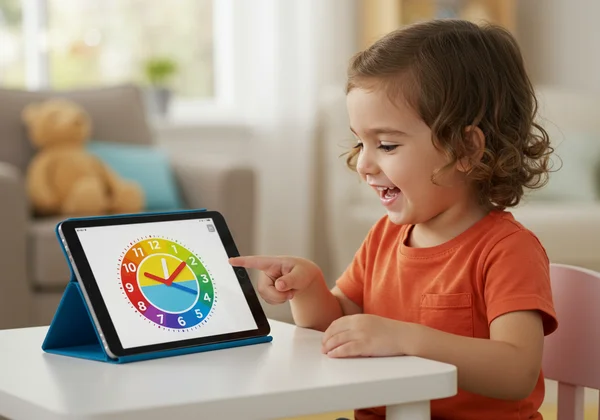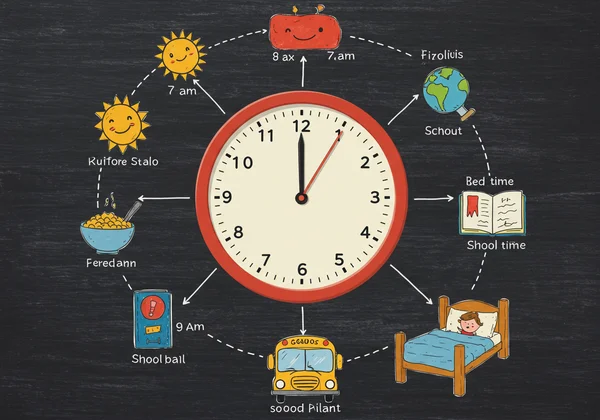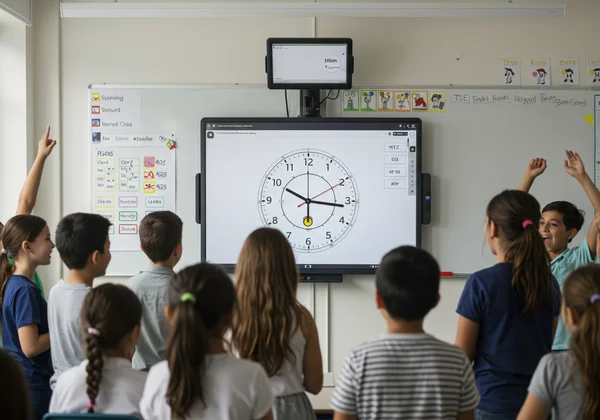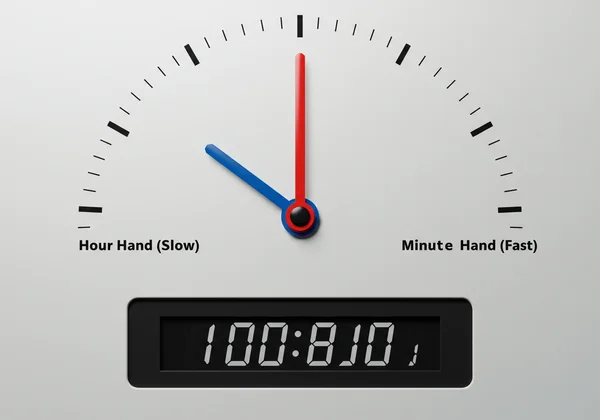10 Fun Clock Games for Kids: An Interactive Time Guide
Does the thought of teaching your child to read an analog clock fill you with dread? You’re not alone. The groans, the wiggles, the cries of "This is boring!" are all too familiar for parents and teachers. But what if telling time wasn't a chore? How do you make learning time fun? The secret is to stop teaching and start playing. With a few creative ideas, you can transform the confusing face of a clock into a vibrant playground of discovery.
We’ve curated ten of our favorite telling time games that you can play right now using a simple, free online tool. These activities are designed to capture a child's imagination, build their confidence, and make the abstract concept of time tangible and exciting. Get ready to turn frustration into fascination with a visit to our fun clock playground.
Why Use Interactive Time Games to Teach?
Before we dive into the games, let's talk about why this method works. Traditional worksheets can be repetitive and fail to capture the dynamic nature of time. An interactive clock, on the other hand, turns passive learning into an active experience. Children learn best by doing, and gamification provides the perfect framework for joyful, effective education.
Boost Engagement Through Hands-On Play
Children, especially younger ones, have short attention spans. The key to keeping them engaged is through interaction. When a child can physically (or digitally) move the hands of a clock and see the immediate result, they become a participant, not just an observer. This hands-on play makes them feel in control, turning a difficult lesson into an exciting challenge. The colorful, responsive nature of an online clock is far more appealing than a static image on a page.
Build Confidence with Instant Feedback
One of the biggest hurdles in learning to tell time is the fear of being wrong. Interactive tools remove this pressure. Our Interactive Analog Clock features a digital display that updates in real-time as your child moves the hands. This instant feedback is a gentle guide, not a harsh critic. When they get it right, they see it immediately, reinforcing their knowledge and boosting their self-esteem. It's a low-stakes environment where mistakes are just part of the fun.

Our Top 10 Telling Time Games Online
Ready to play? All of these games can be played using the features on our free teaching clock. Simply open the tool on a computer, tablet, or phone, and let the fun begin!
Game 1: "Time Match" - The Beginner's First Step
This is the perfect starting point for any child new to the analog clock.
- How to Play: Set a time on the clock by dragging the blue hour hand and the red minute hand. Ask your child to read the time. Then, click the "Show Digital Time" button to reveal the answer. Celebrate their success! For a variation, hide the digital time, say a time out loud (e.g., "three o'clock"), and have your child move the hands to match it.
- Skill Focus: Basic hour and minute recognition.
Game 2: "Random Time Challenge" - Quick-Fire Practice
Once your child understands the basics, this game builds speed and recall.
- How to Play: Click the "Random Time" button. The clock will instantly jump to a new time. The first person to correctly say the time out loud wins the round! This is fantastic for quick-fire practice and can be played with multiple children.
- Skill Focus: Rapid time recognition and verbalization.
Game 3: "Minute Master" - Focus on the Red Hand
The minute hand can be tricky. This game isolates it for focused learning.
- How to Play: Click the "Lock" button next to the hour hand. Now, the blue hour hand won't move. You can drag the red minute hand all around the clock. Call out different minute values (e.g., "15," "30," "45") and have your child move the red hand to the correct position, reinforcing counting by fives.
- Skill Focus: Understanding the minute hand and counting by fives.
Game 4: "Hour Explorer" - Learn the Blue Hand
This game helps children understand the subtle movement of the hour hand.
- How to Play: This time, lock the minute hand. As you drag the hour hand from one number to the next, ask questions like, "Where is the little hand when it's just past 2 o'clock?" or "Where is it when it's almost 4 o'clock?" This helps them learn the hour position between the main numbers.
- Skill Focus: Understanding the progression of the hour hand.
Game 5: "Beat the Clock" - A Race for Speed
Add a thrilling, timed element to your practice sessions.
- How to Play: One person acts as the "Time Caller" and shouts out a random time (e.g., "8:25!"). The other player must set the time on the adjustable clock before the Time Caller counts to ten. This is a high-energy game that kids absolutely love.
- Skill Focus: Speed, accuracy, and performing under friendly pressure.
Game 6: "Story Time" - Connect Time to Daily Routines
This game makes time relevant by linking it to everyday life.
-
How to Play: Tell a simple story about a day's events and have your child move the clock hands to match the timeline. For example: "You wake up at 7:00 AM... then you eat breakfast at 7:30 AM... school starts at 9:00 AM." This is one of the best fun timetelling games for connecting an abstract skill to real-world context.
-
Skill Focus: Applying time-telling to personal schedules and understanding the passage of time.

Game 7: "Time Detective" - Solve the Mystery
Put on your detective hats and solve the case of the missing time!
- How to Play: Give your child clues instead of a direct time. For example: "The little blue hand is just past the 5, and the big red hand is on the 9. What time is it, detective?" Your child must use the clues to set the clock to 5:45 and solve the mystery.
- Skill Focus: Deductive reasoning and understanding positional language ("past," "on," "before").
Game 8: "Past and To" - Master Time Lingo
Help your child master common time-telling phrases like "quarter past" and "half past."
- How to Play: Use phrases instead of digital times. Say, "Show me quarter past eight" or "Set the clock to ten 'til two." Your child then sets the clock to 8:15 or 1:50. This is excellent practice for real-world conversations about time. You can practice telling time with these phrases as much as you need.
- Skill Focus: Understanding fractional time language.
Game 9: "Team Time Challenge" - Perfect for the Classroom
This activity is ideal for teachers looking for engaging classroom clock practice.
- How to Play: Divide the class into two or more teams. Project the online clock onto a smartboard. Click the "Random Time" button and have the "Hide Digital Time" feature active. The first team to correctly identify the time earns a point. It fosters teamwork and healthy competition.
- Skill Focus: Team-based learning and quick recall in a group setting.
Game 10: "What's the Schedule?" - A Planning Game
This advanced game helps with planning and understanding time duration.
-
How to Play: Create a mini-schedule for an activity. For example: "We're going to bake cookies. Mixing the dough takes 15 minutes. Baking takes 10 minutes. Cooling takes 20 minutes. If we start at 4:00 PM, what time will the cookies be ready to eat?" Have your child move the clock hands forward for each step to find the final time.
-
Skill Focus: Calculating time duration and future planning.

Turn Screen Time into Learning Time Today!
Learning to tell time doesn't have to be a battle. By transforming the process into a series of fun, interactive games, you can turn a source of frustration into an opportunity for connection and achievement. You're not just teaching a skill; you're building confidence, improving number sense, and turning screen time into productive, joyful learning time.
Ready to stop the struggles and start the fun? All these games and more are just a click away. Visit our free Interactive Analog Clock now and watch your child light up with excitement as they master the clock!
Your Questions About Teaching Time Answered
How do you explain the hour and minute hand to a child?
Keep it simple and use a story. Explain that the clock is a family. The blue hour hand is the "short, slow" parent who only moves a little bit at a time, pointing to the big number that tells us the hour. The red minute hand is the "long, fast" kid who zips all the way around the clock face, pointing to the little marks that tell us the minutes. Using a hands-on tool where they can move each one independently is the best way to solidify this concept.

What age should a child be able to read an analog clock?
While there's no magic number, most children begin learning around age 6 or 7, typically in first or second grade. However, every child learns at their own pace. The key is to introduce the concept in a fun, pressure-free way. Focusing on games rather than deadlines makes the process more natural and effective, regardless of their starting age.
Are analog clocks better for learning?
Yes, for teaching the concept of time, analog clocks are incredibly valuable. They provide a visual representation of time's passage and duration. Children can see the physical distance between 15 minutes and 45 minutes, helping them understand concepts like "before," "after," and how time flows. An online analog clock combines this classic visual benefit with modern interactive features for the best of both worlds.